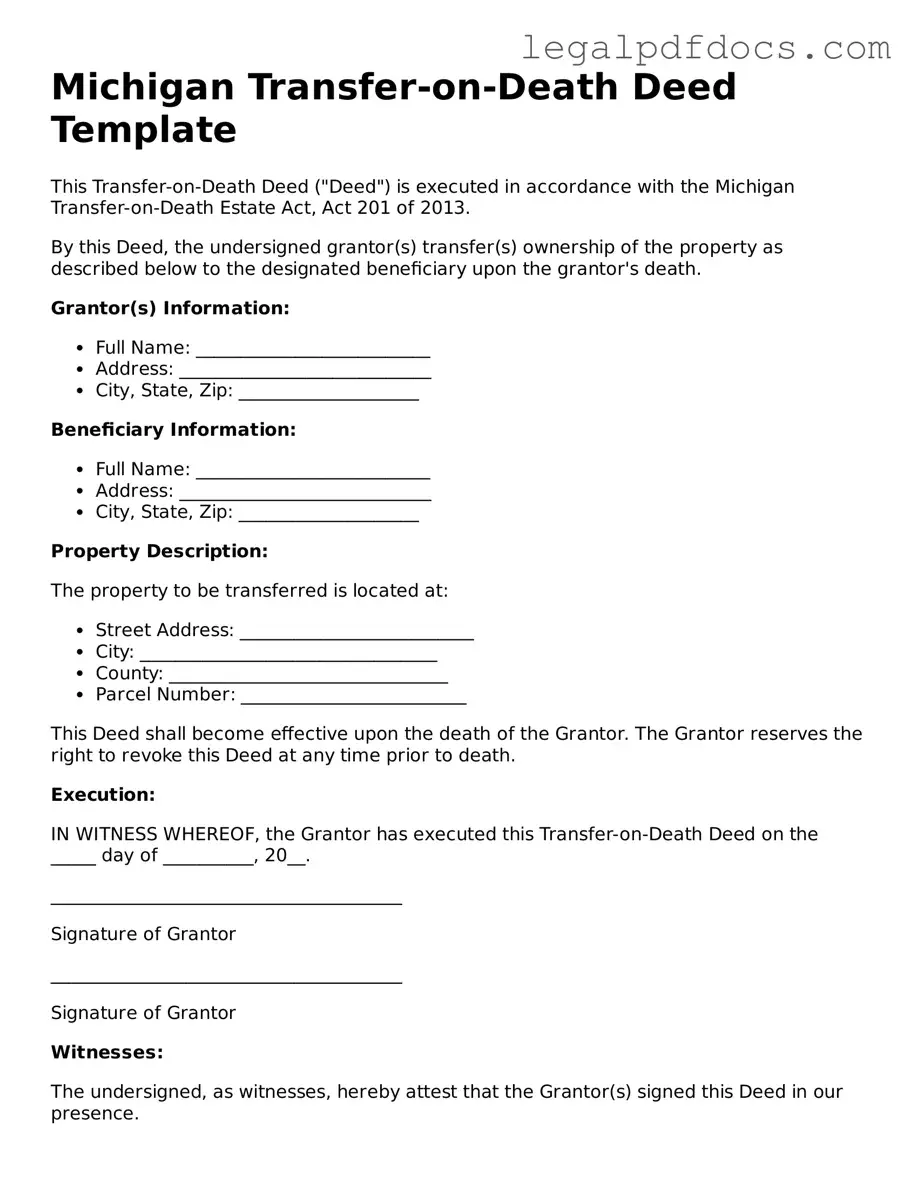The Michigan Transfer-on-Death Deed form serves as a vital tool for individuals seeking to streamline the transfer of real estate upon their death, thereby bypassing the often lengthy and costly probate process. This form allows property owners to designate one or more beneficiaries who will automatically inherit their property, ensuring a smooth transition of ownership without the need for court intervention. Importantly, the deed remains revocable during the property owner’s lifetime, providing flexibility should circumstances change. It is essential for individuals to understand the specific requirements for executing this form, including the necessity for proper notarization and recording with the local register of deeds. Additionally, potential tax implications and the impact on existing debts or liens must be considered, making it imperative for property owners to consult with legal professionals before proceeding. By utilizing the Transfer-on-Death Deed, property owners can take proactive steps to secure their legacy, while also alleviating potential burdens for their loved ones during an already challenging time.
